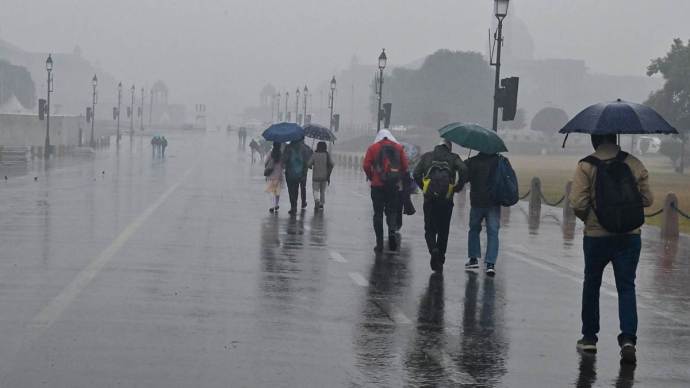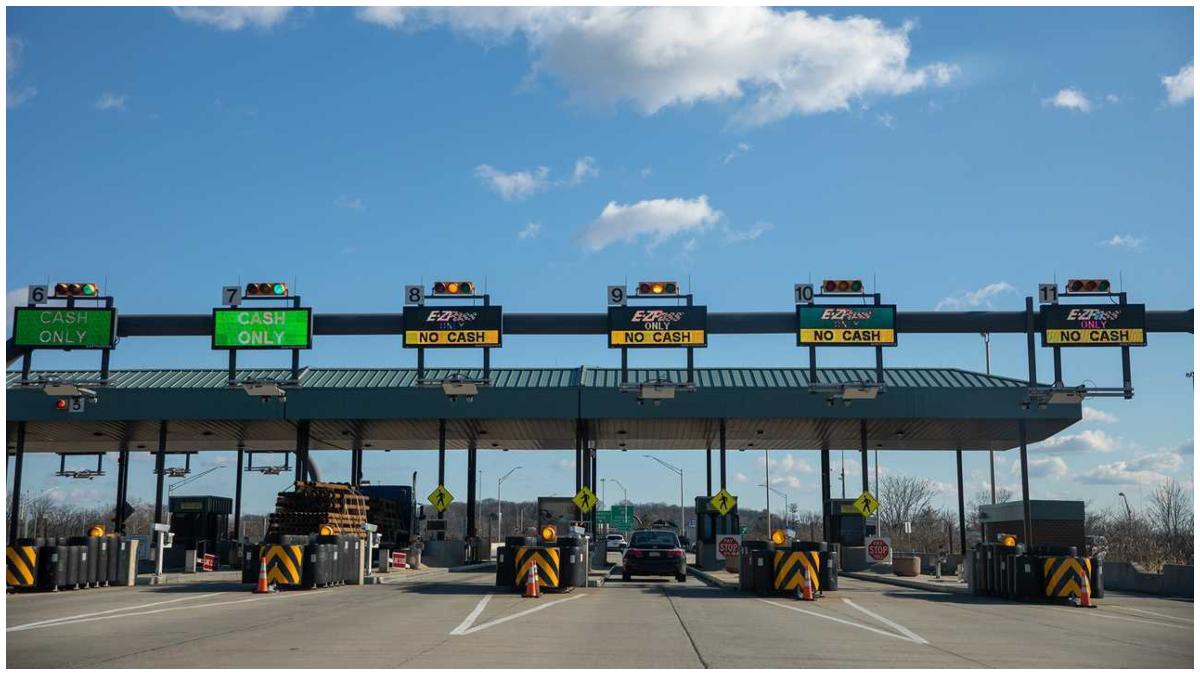The Ministry of Road Transport and Highways issued new rules allowing motorists using private vehicles installed with a Global Navigation Satellite System to commute toll-free up to a distance of 20 kilometres per day on highways and expressways. This amendment came into effect from Tuesday under the ‘National Highways Fee (Determination of Rates and Collection) Amendment Rules, 2024.’
This change marks a new, even more efficient way of paying for tolls, in a very user-friendly way. Here’s what you need to know about this development.
Zero Toll Fees For 20 Km Daily Travel
According to the notification, drivers, owners, or persons in charge of private vehicles plying national highways, permanent bridges, bypasses, or tunnels need not pay any user fee for the first 20 km of journey done in one direction in a day. User fee shall be payable only for the distance travelled beyond 20 km.
It applies to every type of vehicle that is fitted with the GNSS. Also, it excludes vehicles belonging to the National Permit. As per reports, the recent move is aimed at offering cost relief for commuters and ensuring a hassle-free toll-collection process. According to the notification issued by the official, ‘A driver, owner or person in charge of a mechanical vehicle, other than a National Permit vehicle, who makes use of that section of the national highway. Shall levy a zero-user fee for up to twenty kilometres of a journey in each direction a day under the Global Navigation Satellite System-based user fee collection system.’
Pilot Implementation Of GNSS-Based Tolling
To begin with, the GNSS-based toll collection system would be implemented on a pilot basis on selected national highways. The Ministry of Road Transport and Highways, under the leadership of Union Minister Nitin Gadkari, has already carried out pilot studies on main stretches of highways. These include the Bengaluru-Mysore section of NH-275 in Karnataka and the Panipat-Hisar section of NH-709 in Haryana.
The pilot provided the required proof that GNSS-based tolling is dependable and effective, hence its successful implementation could be the first step towards nationwide implementation. As Gadkari puts it, the GNSS-based system is expected to ease toll collection by ensuring distance-based tolling, reducing traffic congestion at toll plazas, and allowing for an efficient driving experience.
Shifting To Hybrid Toll Collection Model
This transition involves the adoption by the government of a hybrid tolling model where both RFID-based Electronic Toll Collection in the form of FASTag and GNSS-based tolling will be used side by side. Thus, the hybrid model brings an easy transition into the new system without fully dispensing with the current FASTag system for some end-users who may still not have GNSS-enabled vehicles.
The NHAI is planning to introduce the GNSS technology into the already operational FASTag ecosystem with the view to ensure seamless tolling without any stops on all national highways. This will ensure a host of benefits for users using highways.
Benefits Of New Toll Rule
The GNSS-based toll collection system is designed keeping in mind several key benefits it would offer to commuters as well as highway authorities. Key benefits include:
1. Distance-Based Tolling: In the GNSS-based toll, drivers pay only for the traveled distance on the highway-very fair for all.
2. Barrier-Free, Hassle-Free Travel: The new system does not require physical toll barriers; thus, vehicles just pass, reducing congestion of waiting and traffic queues at toll plazas.
3. Efficiency Enhancement: The GNSS-based system is expected to plug revenue leakages and curb toll evasion, leading to a more efficient and transparent toll collection process.
4. Usage of Technology Encouraged: The use of advanced satellite navigation technology will encourage more drivers to adopt GNSS-enabled systems in their vehicles, further facilitating digitalisation across India’s transport sector.
Stakeholder Consultations And Future Plans
The Ministry had conducted extensive consultations with various stakeholders before the unveiling of this system. An international workshop was organized on June 25, 2024, along with a global expression of interest process. The EOI invited the industries to participate in the consultation process and the last date for receipt of submissions was July 22, 2024.
The government is keen to bring in the system as part of its bigger vision to modernize India’s highways and align its toll collection infrastructure in line with global standards. The Ministry of Road Transport and Highways says that GNSS-based tolling will also ensure easier movement of vehicles across the national highways, leading to reduced congestion and travel time.
A Step Towards Digital Highways
Demand is getting higher for high-end digital services. The Indian government is always interested in the application of advanced technologies such as cloud computing, satellite navigation, etc., to improve infrastructure. Introduction of the GNSS-based tolling system is part of this big dream of transforming the nation’s highways into smart and digital corridors.
Not only will the process of toll collection be smoothened, but GNSS will also facilitate overall road management by providing current data on current traffic flow, usage of roads, and congestion points. Such information can be put to good use by the authorities while managing and maintaining the network of highways.
---Advertisement---
India
New Toll Rule: FREE Travel On Highways For Up To 20 Km For Private Vehicles – What’s The Catch?
The Ministry of Road Transport and Highways, under the leadership of Union Minister Nitin Gadkari, has already carried out pilot studies on main stretches of highways.
---Advertisement---
---Advertisement---
First published on: Sep 11, 2024 10:16 AM IST
Get Breaking News First and Latest Updates from India and around the world on News24. Follow News24 on Facebook, Twitter.
Related Story
Live News
---Advertisement---
live
IMD Weather Update: Heavy To Very Heavy Rainfall Predicted Across India From July 17-22; Alerts Issued For Hills, Plains, And Coastal Areas
Jul 17, 2025

-
12:30 (IST) 17 Jul 2025
Multiple Two-Wheelers Crushed as Compound Wall Gives Way Amid Torrential Rainfall in Mangaluru
SHORTS

Cricket
View All Shorts
---Advertisement---
Trending
Viral: MP Man’s Temple Volunteering Turns Hilarious As Pitfall Video Takes Social Media By Storm
Jul 16, 2025 02:40 PM IST
Viral Video: Little Girl Cries Uncontrollably After Being Slapped By Auto Driver, Internet Outraged
Jul 13, 2025 11:57 AM IST
Viral Video: Children Casually Carry 15-Foot Python In UP’s Bulandshahr, Leave Netizens Stunned
Jul 10, 2025 01:18 PM IST
Bihar Teacher Brutally Beaten With Sticks By Angry Parents After Slapping Child
Jul 07, 2025 08:57 AM IST
Chandigarh Viral Video: Boy Falls 20 Feet Into Sukhna Lake While Attempting Dangerous Stunt For Reel
Jul 06, 2025 02:35 PM IST
‘That’s The Calmest She Has Been Till Now’: Emotional Adoption Moment in NICU Leaves Internet in Tears
Jul 03, 2025 04:33 PM IST
Meghalaya’s Beautiful Nohkalikai Falls Hides A Horrifying Tale
Jul 03, 2025 03:32 PM IST
‘Civilized People Don’t Eat Like This’: Republican Slammed For Racist Dig At Zohran Mamdani Over Eating With Hands
Jul 01, 2025 04:59 PM IST
Viral Video: Bihar Woman Constable Sparks Outrage with Reel on “Hum Hain Bihari, Thoda Limit Mein Rahiye Ga”
Jul 01, 2025 03:55 PM IST
Viral Video: Man Cycles 1200 km with Dog to Visit 12 Jyotirlingas and Char Dham
Jun 30, 2025 05:03 PM IST










